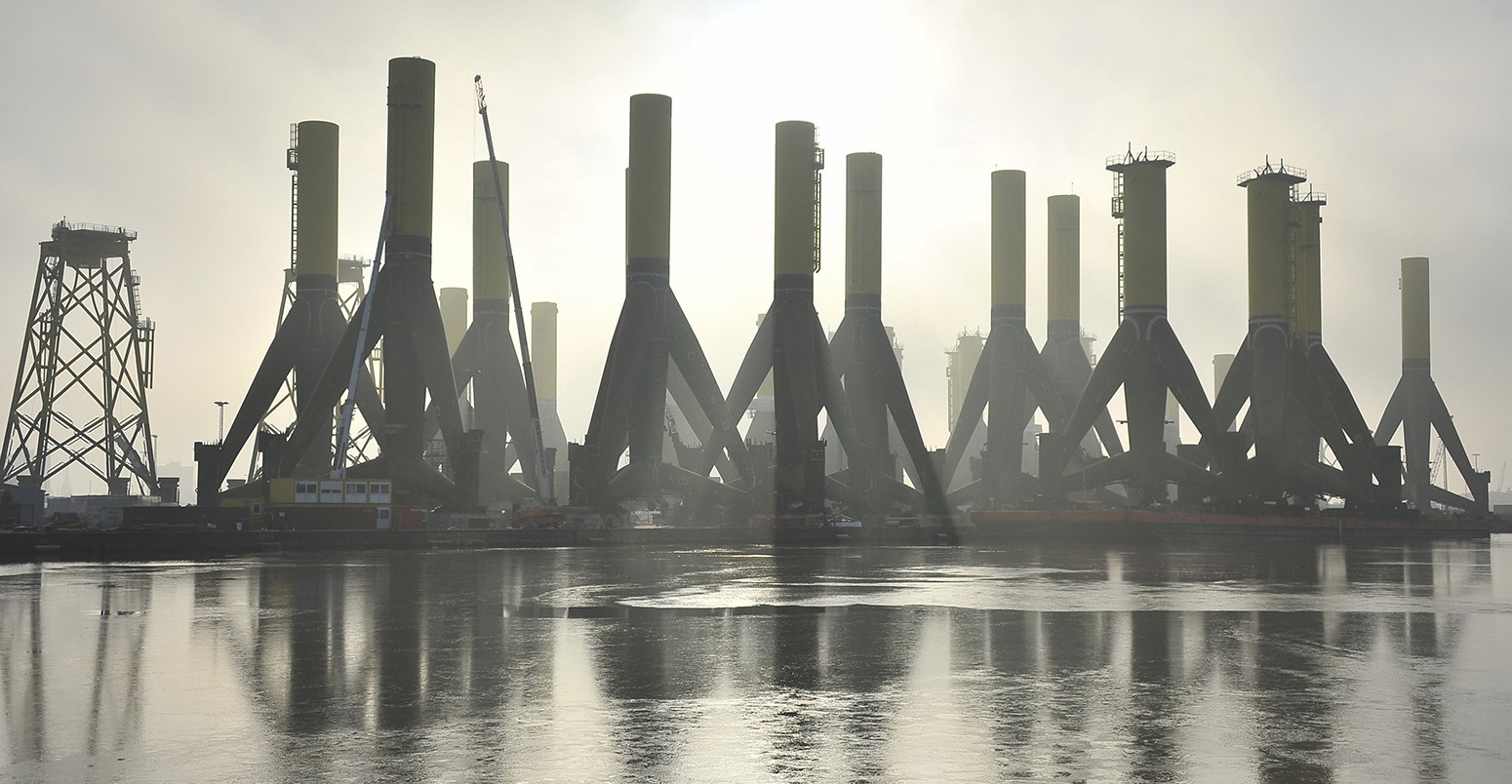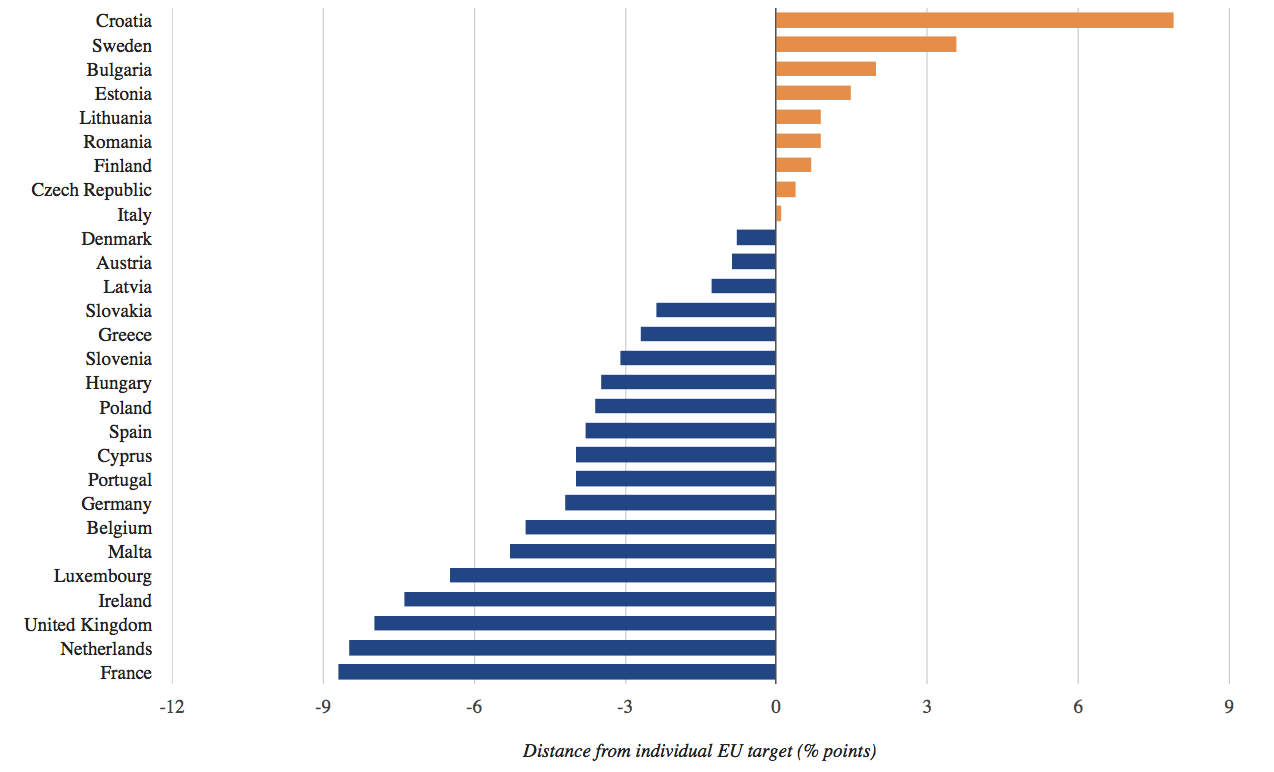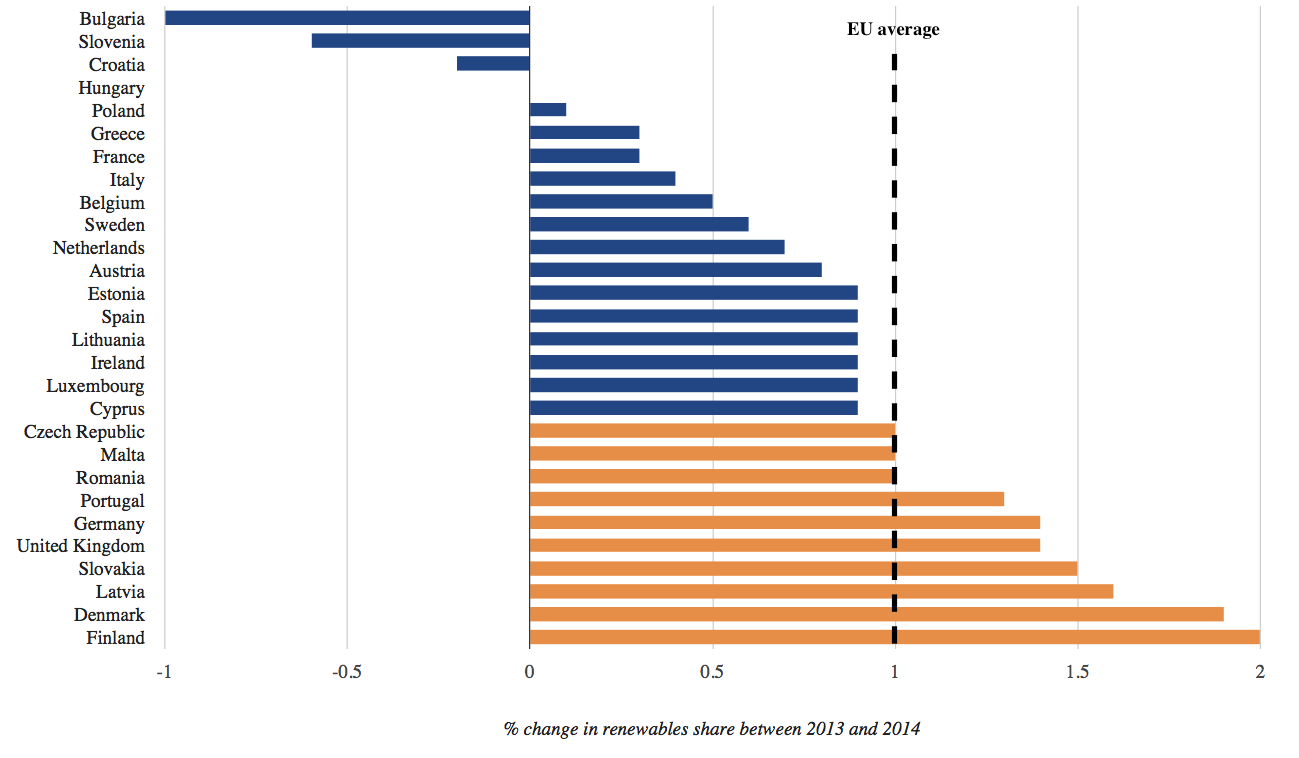
Who’s hitting the EU’s 2020 renewables target — and who’s holding it back?
Sophie Yeo
02.10.16Sophie Yeo
10.02.2016 | 5:15pmThe EU has today released statistics for 2014, showing its progress in boosting the share of renewables in its overall energy mix.
These figures are broken down by country, showing which ones are transitioning the fastest away from fossil fuels, and which are moving at a slower pace.
Carbon Brief has looked at the numbers to see which countries came out on top in 2014, and which countries were holding back the bloc’s progress on clean energy.
Burden sharing
The EU has a target of getting 20% of all its energy – electricity, heat, transport, etc – from renewable sources by 2020.
This target is divided across the bloc, so that wealthier countries that have a higher share of renewables to begin with do more, lifting some of the burden from their EU neighbours who will have a harder time of it.
Sweden has a 49% target, for instance, whereas Malta, the country with the lowest renewables target, only has to generate a 10% share of its energy from renewables by 2020.
What really matters is that the share of renewables hits an average of 20% across the EU, as a whole. The interactive map below shows how much each country has to achieve as part of this group effort.
EU 2020 target for share of energy derived from renewables. Yellow indicates that a country has to achieve more than the 20% target; blue indicates that it has to achieve less than the 20% target. Data: Eurostat. Chart by Carbon Brief.
Overachievers and underachievers
Despite this effort to place countries on a level playing field, according to their respective capabilities, countries are progressing at different speeds towards their targets.
Some countries have already achieved their 2020 targets and are going beyond them. Others still have yet to hit their 2020 goal. This data shows progress up to 2014, so countries still have six years to make it to their target from this point.
It is worth remembering, though, that those countries furthest from their 2020 target now have the most work to do in the rest of the decade in order to rapidly increase their share of renewables.
For instance, the UK — the third biggest underachiever after France and the Netherlands — has already privately indicated that it will struggle to meet its 2020 target.
The following graph shows which countries have already exceeded their 2020 goals, which have yet to make it, and by how much.

Distance from achieving individual 2020 renewable energy targets, by percentage point. Refer to the map above to see the 2020 target for individual countries. Data: Eurostat. Chart by Carbon Brief.
Forwards and backwards
Overall, the EU increased its share of renewable energy by one percentage point in 2014, with wind, solar, biomass, hydro and others responsible for 16% of energy, compared to 15% the previous year.
Again, this increase represents an average of the progress across all EU countries. Some countries achieved a less than one percentage point increase in their shares of renewables and some achieved more, while a handful went backwards obtaining a smaller share in 2014 than they did in 2013.
So, which countries can take the credit for pushing the overall EU average up in 2014, and which dragged it down?
The following chart shows which countries achieved less than the EU average, and which countries achieved more.

Percentage point change in the share of renewable energy in 2014, compared to the 2013 level. Yellow indicates countries that achieved the EU average or above; blue shows those who achieved less than the EU average. Data: Eurostat. Chart by Carbon Brief.
Conclusion
Croatia and Bulgaria — among the countries overachieving their 2020 target by the widest margin — are also among those who slid backwards in 2014, generating a smaller share of their energy from renewables than they had previously.
The UK, on the other hand, is among the countries currently missing its 2020 target by the widest margin, yet it also increased its share of renewable energy in 2014 by one of the widest margins.
Only Finland, with a 38% target, is both already overachieving on its target and exceeding the EU average increase in renewables share for 2014.
On the opposite end of the scale, Slovenia, with a 25% target, is alone in both not having achieved its 2020 target and going backwards on the share of renewable energy that it generates. It is worth noting that Ljubljana, Slovenia’s capital, has just been crowned European Green Capital for 2016.
Main image: Components for offshore wind turbines, Container Terminal Bremerhaven, Bremerhaven, Bremen, Germany, Europe, 10 Feb 2013.
-
Who's hitting the EU's 2020 renewables target — and who's holding it back?

